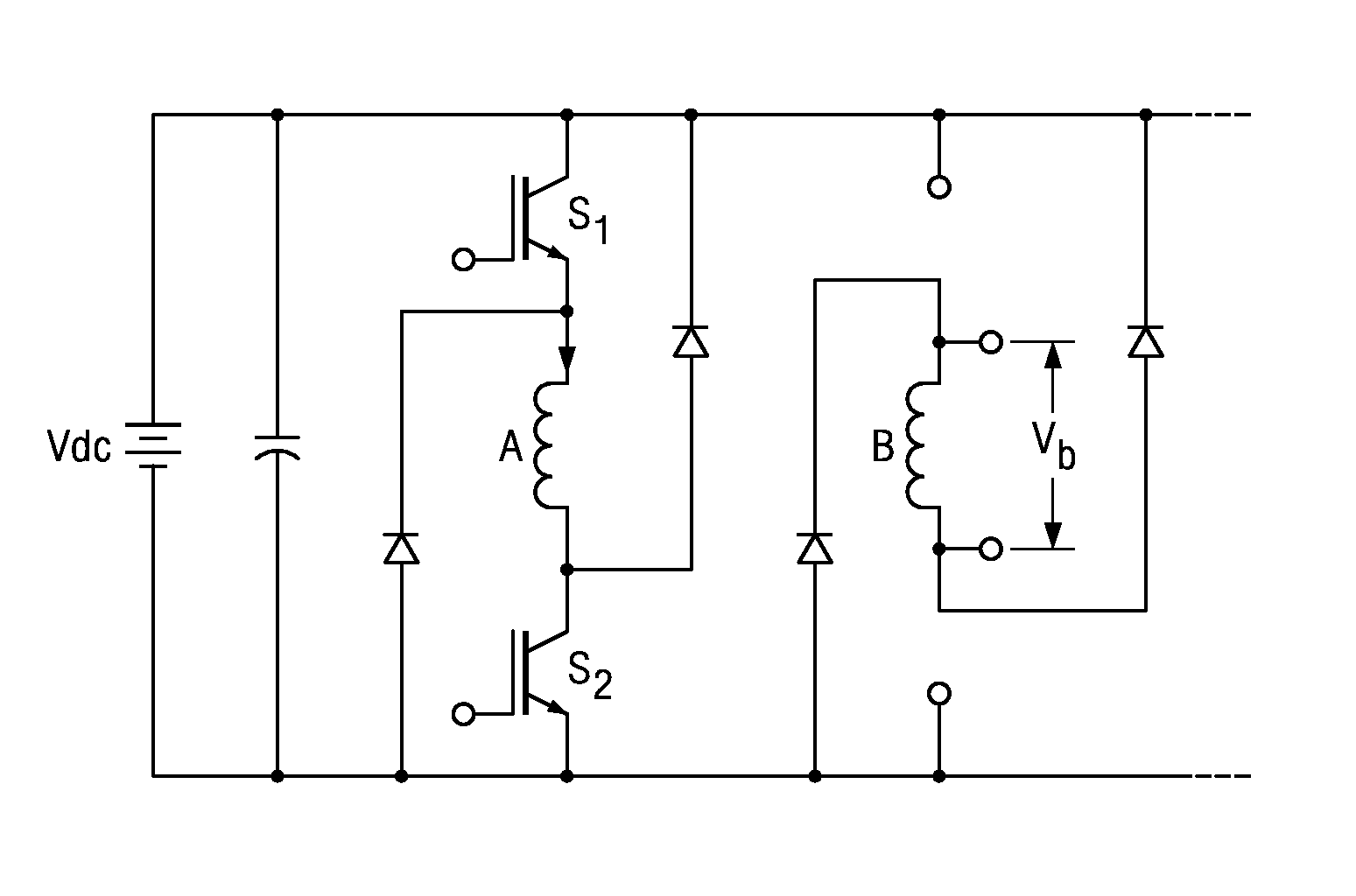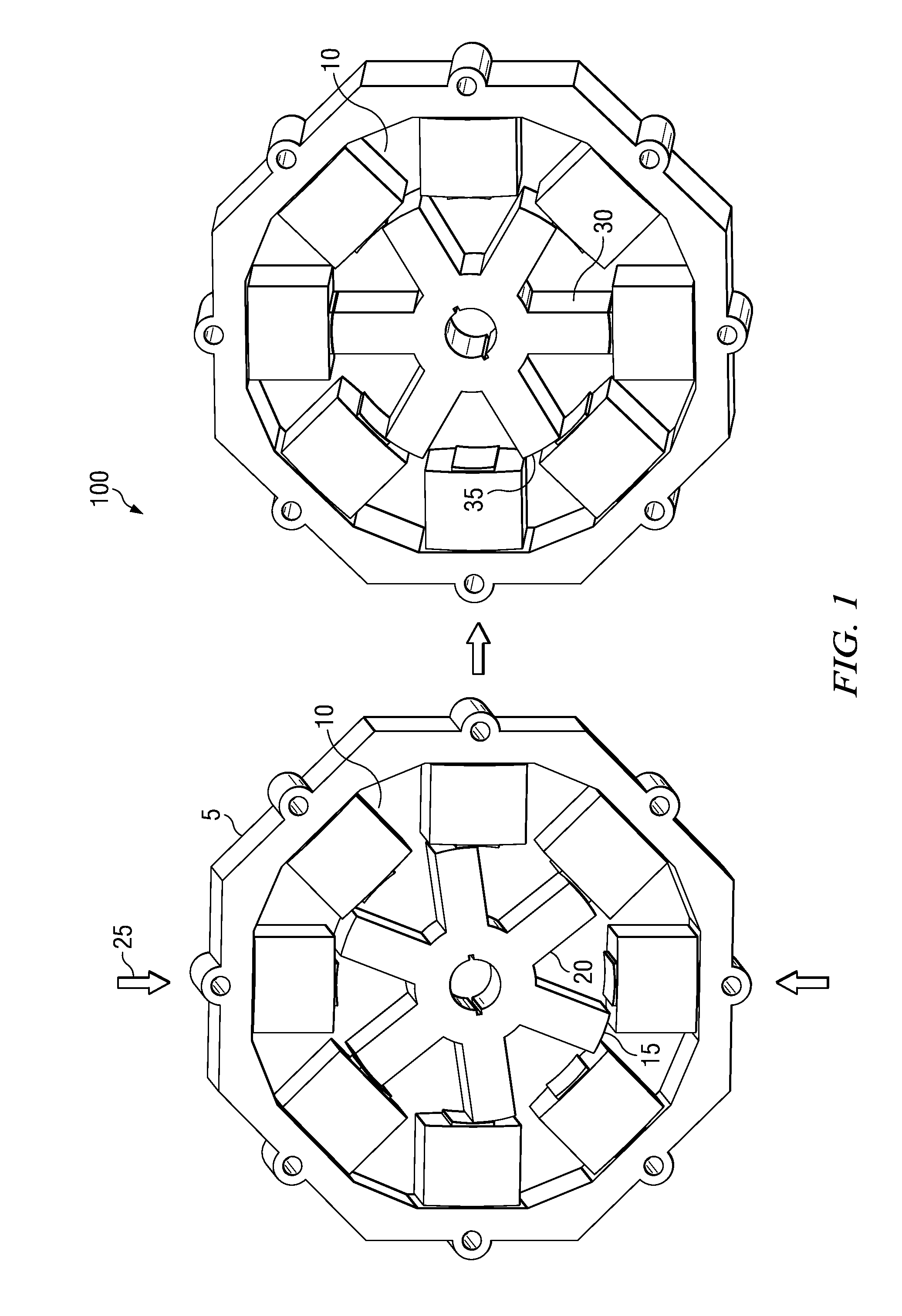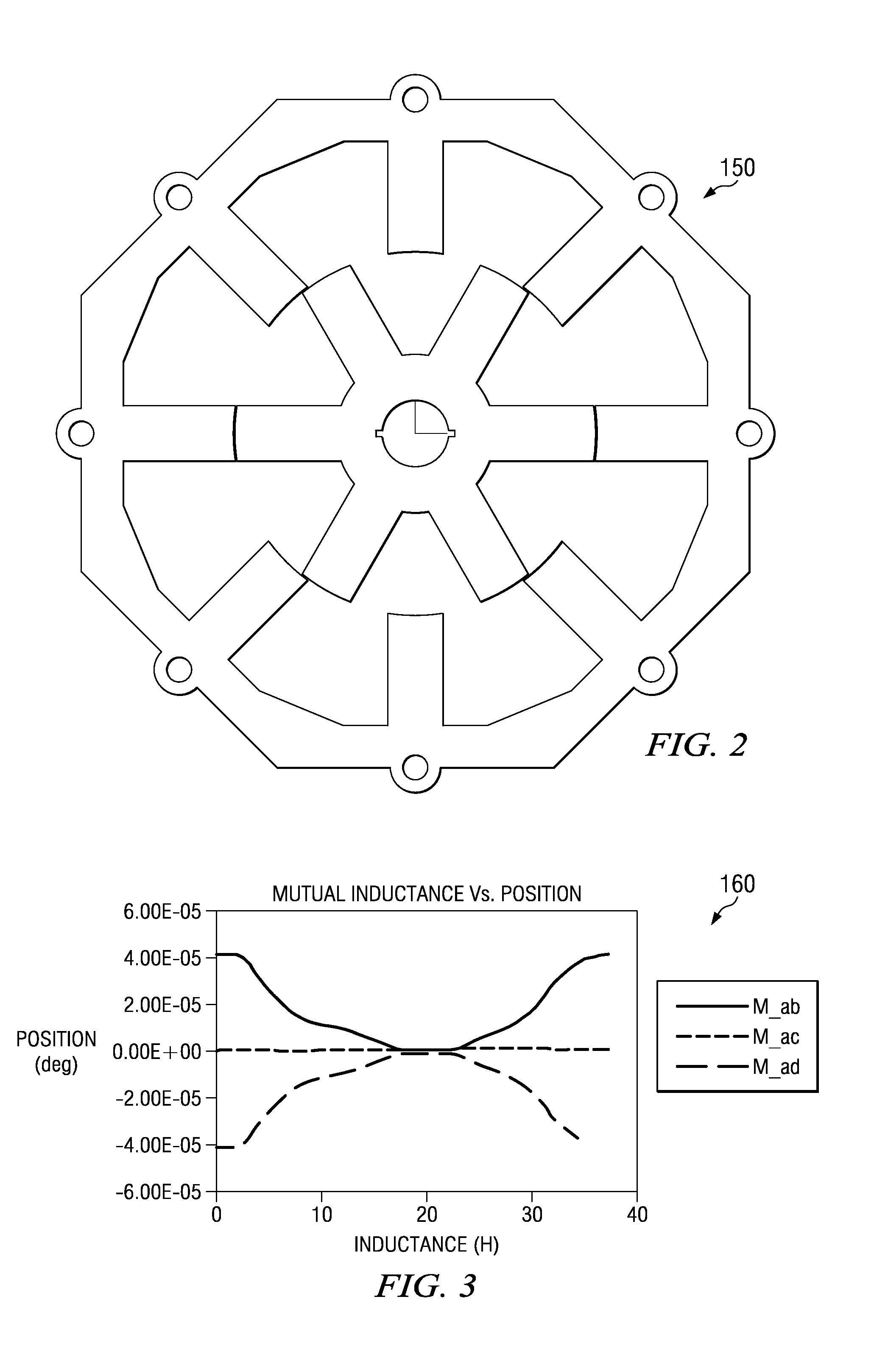Techniques and apparatus for the measurement of mutual inductance in a switched reluctance machine
a technology of mutual inductance and switch resistance, which is applied in the direction of electronic commutators, motor/generator/converter stoppers, dynamo-electric converter control, etc., can solve the problem of not being able to use high-performance systems such as military and aerospace applications
- Summary
- Abstract
- Description
- Claims
- Application Information
AI Technical Summary
Benefits of technology
Problems solved by technology
Method used
Image
Examples
Embodiment Construction
[0020]Referring to FIG. 1, a perspective diagram of a section of a Switched Reluctance Motor 100 (SRM). An SRM comprises of a stator 5 and a rotor 20. A stator comprises of several coils 10. In the example embodiment, the stator comprises eight coils. Also, in the example embodiment the rotor comprises six magnetic poles. This example embodiment is typically referred to as 8 / 6 SRM configuration. Apparently, several motor configurations are feasible in practice. The analysis and description herein generally refers to the 8 / 6 SRM configuration which can be adapted for other motor configurations.
[0021]Switched reluctance motors are often operated with a phase overlap, which results in higher torque and lower pulsation. A pattern of excitation in which there is a very low flux density between the excited phases is called “long flux path excitation (LFPE)”. The other excitation scheme is called “short flux path excitation (SFPE)” wherein the flux path closes its loop through the adjacent...
PUM
 Login to View More
Login to View More Abstract
Description
Claims
Application Information
 Login to View More
Login to View More - R&D
- Intellectual Property
- Life Sciences
- Materials
- Tech Scout
- Unparalleled Data Quality
- Higher Quality Content
- 60% Fewer Hallucinations
Browse by: Latest US Patents, China's latest patents, Technical Efficacy Thesaurus, Application Domain, Technology Topic, Popular Technical Reports.
© 2025 PatSnap. All rights reserved.Legal|Privacy policy|Modern Slavery Act Transparency Statement|Sitemap|About US| Contact US: help@patsnap.com



